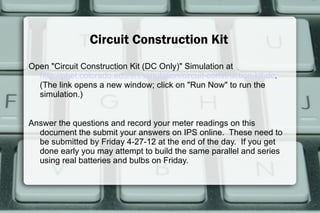This document provides instructions for using an online circuit simulation to build simple series and parallel circuits and measure voltages. Students are asked to construct circuits with batteries, bulbs, and switches, then use a voltmeter to measure voltages across components. They record their measurements and answers to questions about which components have voltage differences and why bulbs may not light up.





